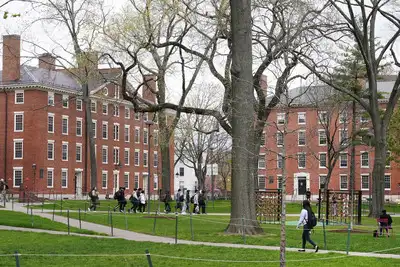
Harvard quietly dismantles student diversity offices without notice on campus.
In a move that has stunned students and higher education observers alike, Harvard University has quietly taken down several of its prominent student diversity offices with no public statement, no campus-wide email, and no clear plan for what comes next.
As of Wednesday, websites for the Harvard College Women’s Center, the Office for BGLTQ Student Life, and the Foundation for Intercultural and Race Relations have been deleted. The links now redirect to a barebones page for a newly created "Office of Culture and Community."There has been no official confirmation from the university on whether these centres have been shut down permanently or simply restructured. But for many students, the message is already clear: Harvard is stepping away from the framework of diversity and inclusion it once championed.
A sudden, silent overhaul
The removals took place the same afternoon Harvard’s Faculty of Arts and Sciences (FAS) announced the creation of a new administrative body: the Office for Academic Culture and Community. The new office is described as a space for fostering connection and intellectual growth, but it makes no reference to race, gender, sexual orientation, or any historically marginalised group. The term “diversity” has been scrubbed from the announcement entirely.
This change is part of a broader institutional shift that began in April, when Harvard replaced its central Office for Equity, Diversity, Inclusion, and Belonging with a more general “Campus and Community Life” office. At the time, it was unclear how deeply that change would affect individual schools. Now, it appears the overhaul is reaching into the heart of undergraduate student life.
Federal pressure and political calculations
The quiet dismantling of these offices comes at a politically fraught moment.
Earlier that same day, the Trump administration issued a subpoena to Harvard and threatened to revoke its accreditation. For months, federal officials have been pressuring elite universities to eliminate DEI initiatives, framing them as unconstitutional and discriminatory. The demand to roll back DEI has reportedly been one of the conditions tied to restoring federal research funding.Harvard has not confirmed whether the timing of the website removals and office reshuffling was influenced by federal negotiations.
A university spokesperson described it only as a "continuation" of the transition that began earlier this year. But the alignment between political demands and institutional changes is impossible to ignore.
The cost to students
For students who relied on these offices for support, visibility, and community, the impact is already being felt. These centres were more than administrative units, they were hubs of advocacy, mentorship, and belonging.The Women’s Center regularly hosted gender equity programming, career workshops, and mentorship events. The Office for BGLTQ Student Life provided peer counselling, health resources, and campus-wide visibility for queer students. The Harvard Foundation worked to promote intercultural dialogue and address racial inequality through funding, events, and partnerships.Now, their futures are uncertain. Staff members remain listed in internal directories, but the public-facing presence of their work has been erased.
Archived statements, including a 2020 message from former College Dean Rakesh Khurana titled “The Importance of Diverse Learning Communities,” have also been deleted from Harvard's website.
A new language, a new direction
The replacement offices emphasise broad values such as "community," "growth," and "shared purpose": all carefully neutral terms. The new Office of Culture and Community's page avoids any mention of the specific populations it is meant to serve.
Its statement encourages students to build “bonds and bridges” but omits reference to gender, race, or orientation.This is part of a wider trend in American academia, where institutions are reframing inclusion efforts in more politically palatable language to avoid regulatory or funding backlash. But for many on campus, the shift feels like a retreat from hard-won progress.
Is this the end of inclusion?
For now, Harvard’s administration insists that its commitment to supporting students remains intact, albeit in a new form.
But the absence of transparency, consultation, and clarity has eroded trust. Students, faculty, and alumni are left questioning not just the structure of campus life, but the values Harvard is choosing to uphold.What began as an administrative change has turned into a broader philosophical question: can inclusion exist without being named? And what happens to those students who relied on these offices when the language, and the resources, that supported them disappear?For many at Harvard, the silence speaks louder than any policy memo.TOI Education is on WhatsApp now. Follow us here.

 7 hours ago
50
7 hours ago
50




























 English (US)
English (US)